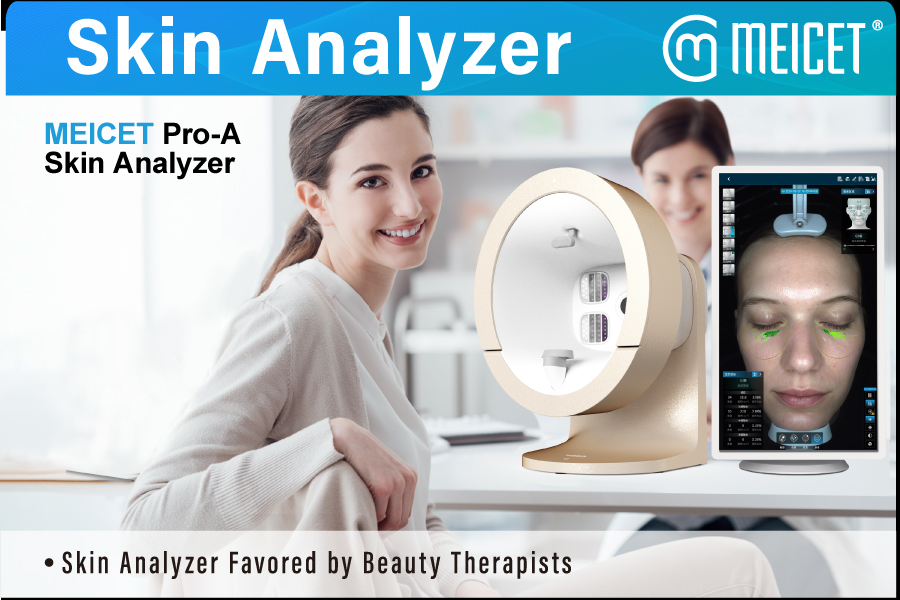The esthetician’s studio feels more like a mission control center these days. Where once stood simple magnifying lamps now sit sleek devices humming softly as spectral imaging sensors map a client’s face in microscopic detail. Within seconds, subsurface inflammation, hidden sun damage, and dehydration patterns flash across the screen—invisible flaws suddenly rendered as clear as roadmap. This is modern skin analysis equipment: a fusion of optics, artificial intelligence, and predictive technology redefining how we understand our largest organ.
From Guesswork to Precision Science
Gone are the days when skin assessments relied solely on visual inspection or subjective questionnaires. Today’s systems decode the skin’s secrets using multi-spectral imaging, capturing what human eyes cannot perceive. Polarized light exposes subsurface redness and vascular concerns; UV imaging reveals accumulated sun damage years before it surfaces as hyperpigmentation; cross-polarized filters highlight texture irregularities and early-stage scarring. The result is a comprehensive biological blueprint—one that transforms generic skincare into hyper-personalized regimens.
Core Capabilities Redefining Diagnostics
Modern analyzers function as both detective and oracle. At their most fundamental, they quantify oil-water balance to classify skin as dry, combination, or oily—critical for avoiding pore-clogging or barrier-disrupting products. But their deeper value lies in predictive insights. By measuring melanin concentration and distribution, they forecast pigmentation risks, allowing preemptive intervention. Wrinkle mapping analyzes depth and trajectory to distinguish dynamic expression lines from structural aging, guiding targeted anti-aging strategies.
Pore assessment goes beyond size, evaluating blockages and shape abnormalities that contribute to congestion. Crucially, inflammation detection identifies subclinical acne or rosacea triggers before visible flare-ups occur, while hydration algorithms distinguish surface dehydration from impaired barrier function—a nuance dictating whether to hydrate or repair. High-end devices integrate 3D simulations projecting skin trajectories years ahead based on current damage and behavior patterns.
Navigating the Tech Spectrum
The equipment landscape spans from accessible to clinical-grade:
- Magnifying Lamps: Entry-level stalwarts offering illuminated magnification for surface-level concerns like blackheads or flaking. Ideal for extraction-focused clinics.
- Portable Analyzers: Often tablet-compatible, these use AI-driven cameras for rapid moisture/oil/acne scoring. Perfect for quick consultations or retail environments.
- Multi-Spectral Stations: Flagship devices deploying UV, RBX, and polarized light to scan epidermal and dermal layers. Standard in medical spas treating photodamage or sensitivity.
- Total Body Mappers: Rare but revolutionary, these units scan limbs and torso to track lesions, psoriasis progression, or body-wide hyperpigmentation—vital for holistic dermatology.
The Selection Playbook
Choosing the right analyzer hinges on clinical priorities. For acne-focused practices, polarized magnifiers with cross-illumination pinpoint plugged follicles and subclinical inflammation. Anti-aging specialists prioritize wrinkle quantifiers with elasticity scoring. Those serving diverse demographics lean toward pigment-analysis engines that accurately assess melanin in all skin tones. Increasingly, practices opt for cloud-connected systems enabling progress tracking across sessions—a feature indispensable for monitoring conditions like melasma or rosacea.
Future-forward clinics prioritize AI integration. Machine learning algorithms now compare individual scans against global databases, identifying rare patterns suggestive of premalignant changes or genetic conditions. While not diagnostic, these flags prompt critical medical referrals.
Beyond Beauty: The Wellness Paradigm
The implications transcend cosmetic concerns. Nutritionists use hydration and inflammation data to refine dietary plans; oncologists track radiation-induced skin changes; endocrinologists correlate hormonal fluctuations with sebum production shifts. In elder care facilities, portable scanners monitor fragility and wound-healing potential. This convergence of beauty and health epitomizes skin analytics’ greatest promise: transforming the surface into a window for systemic wellbeing.
Tomorrow’s Skin Labs
Next-generation devices now in development promise deeper disruption. Hyperspectral imaging could detect glucose or cholesterol biomarkers transdermally. At-home handhelds with clinical-grade accuracy may soon empower daily microbiome management. And as AI prediction models sharpen, your skin analyzer might one day email your dermatologist—and your fridge—before you ever sense a problem.
What began as a tool to sell better serums now challenges how medicine perceives preventative care. In rendering the invisible visible, skin analysis hasn’t just changed faces. It’s redefined our relationship with the body’s most revealing canvas.
by Irina
Post time: Jul-16-2025










